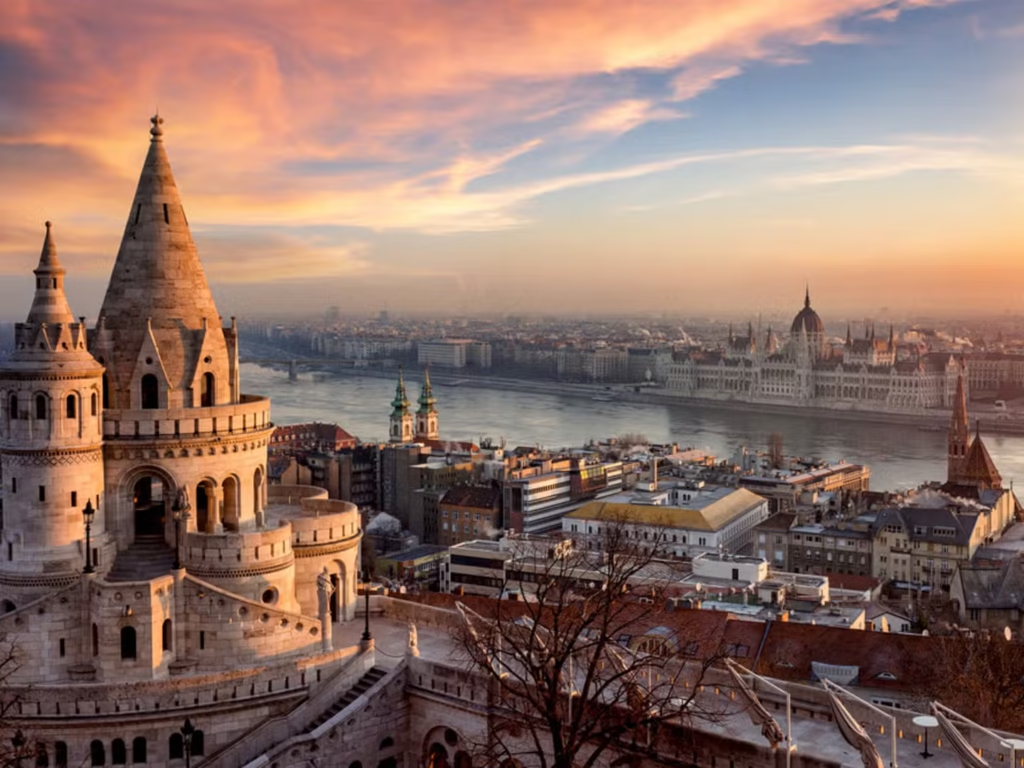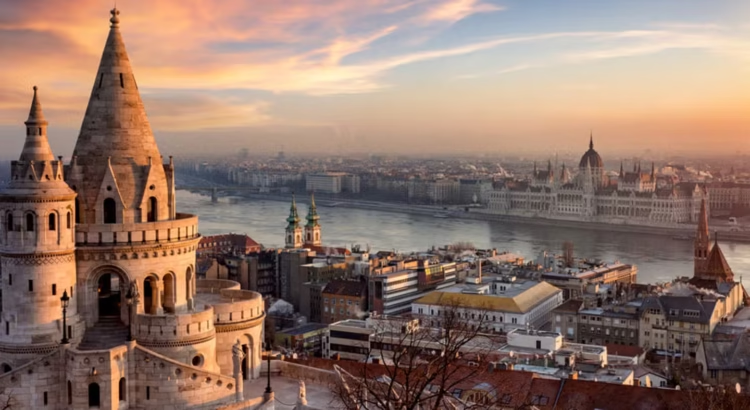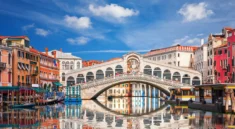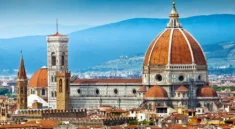
Nestled along the sweeping curves of the Danube River, Budapest stands as one of Europe’s most compelling capital cities. Known for its remarkable blend of natural thermal springs, historical architecture, and cultural sophistication, Hungary’s capital offers travelers an experience that is as rejuvenating as it is enriching. Divided into two distinct sides—Buda and Pest—this unified city is a tapestry of imperial grandeur, Ottoman relics, and artistic revival. Nowhere else in Europe can one soak in a centuries-old bath, dine beside a flowing river, and explore castles and cathedrals, all within a day’s stroll.
In this immersive journey, we’ll explore three defining aspects of Budapest’s charm: its legendary spa culture, its mesmerizing river views, and its deep historical roots that echo through its architecture and soul.
The Soul of the City: Thermal Spas and Ancient Healing
Budapest has long been referred to as the “City of Spas,” and for good reason. Beneath the surface of this capital flows a vast network of mineral-rich thermal waters—over 120 natural springs—making it one of the most geothermally active urban areas in the world. The tradition of bathing in these therapeutic waters spans millennia, from the Romans who built the first bathhouses, to the Ottoman Turks who expanded the tradition in the 16th century, and onward to the ornate bath palaces of the Austro-Hungarian era.
Széchenyi Thermal Bath
Perhaps the most iconic of all, Széchenyi Bath is the largest medicinal bath in Europe. Located in the heart of City Park, this grand Neo-Baroque complex features 18 pools, steam rooms, saunas, and even thermal whirlpools. Visitors can relax in outdoor pools that emit steam in winter’s chill or enjoy aquatic chess matches, a beloved local pastime. The water, sourced from two natural thermal springs, is known to ease muscular ailments, arthritis, and stress—offering both physical and mental rejuvenation.
Gellért Thermal Bath
On the Buda side of the city, nestled at the foot of Gellért Hill, lies the Gellért Baths—an Art Nouveau masterpiece from 1918. With its stunning mosaic tiles, stained-glass windows, and Roman columns, the bath feels more like a cathedral than a spa. Indoor and outdoor pools, wave pools, and private treatment rooms allow guests to soak not only in healing waters but in architectural beauty. The mineral content of the water—rich in calcium, magnesium, and sulfate—adds to its restorative reputation.
Rudas Bath
For those seeking a more historical and atmospheric experience, Rudas Bath is a must-visit. Dating back to the Ottoman era in the 16th century, its central octagonal pool, surrounded by columns and topped with a domed ceiling pierced by small skylights, evokes the mystique of the past. Renovated yet faithful to its origins, Rudas offers Turkish-style bathing, gender-specific days, and a modern rooftop pool with panoramic views of the Danube—a sublime way to end a day of exploration.
Budapest’s spa culture is not just about wellness, but ritual, tradition, and community. Locals visit spas regularly, not just to heal but to meet friends, relax after work, or even hold informal business meetings in warm waters. This integration of relaxation into daily life gives the city a rhythm all its own.
The Danube: Budapest’s Liquid Lifeline
The Danube River, Central Europe’s great waterway, is more than a natural landmark in Budapest—it is the city’s soul. Flowing through the middle of the capital, the Danube separates the hilly Buda side from the flat and lively Pest side. Yet, rather than dividing the city, it unites its landscapes, connecting them with a series of architectural marvels and providing some of the most beautiful urban river views in the world.
Chain Bridge and Iconic Crossings
The Széchenyi Chain Bridge, completed in 1849, was the first permanent bridge to connect Buda and Pest. With its stone lions, suspension chains, and stately arches, it remains an enduring symbol of Hungarian progress and unity. Walking across it at dusk, as the lights flicker on and reflections shimmer on the water, is one of the most romantic experiences in Budapest.
Other notable crossings include the Elizabeth Bridge, Margaret Bridge, and the Liberty Bridge, each offering unique perspectives and architectural flair. The bridges are not just transportation links—they are cultural symbols and popular photo spots.
The Danube Promenade and River Cruises
On the Pest side, the Danube Promenade is a popular walkway stretching from the Elizabeth Bridge to the Chain Bridge. Lined with statues, benches, and historic buildings, it’s a place where locals and tourists alike pause to admire the view. One particularly moving stop is the “Shoes on the Danube Bank” memorial, which honors the Jews who were murdered along the river during World War II.
For an unforgettable experience, a Danube river cruise is essential. Day cruises offer panoramic views of Buda Castle, the Hungarian Parliament Building, and Fisherman’s Bastion. Night cruises are even more magical, with illuminated monuments glowing gold and silver along the banks. Some cruises include dinner, live music, or even folklore performances, making it a full-sensory journey through the heart of Budapest.
Margaret Island
In the middle of the Danube lies Margaret Island, a lush, 2.5-kilometer-long park that serves as a recreational haven. Car-free and shaded by ancient trees, the island is perfect for jogging, biking, or simply unwinding in nature. Visitors will find medieval ruins, a musical fountain, a small zoo, and open-air thermal pools. It’s a peaceful escape that feels a world away from the bustling city.
The Danube is not just a river in Budapest—it is a source of life, inspiration, and poetry, woven into the daily rhythm and soul of the city.
Historical Splendor: Walking Through Budapest’s Timeless Past
Budapest’s architectural landscape is a vivid chronicle of its rich and varied past. From Roman ruins to Gothic cathedrals, from Ottoman mosques to Austro-Hungarian palaces, the city is a living museum that tells the story of empires, wars, revolutions, and rebirth.
Buda Castle and Castle Hill
Perched atop Castle Hill, Buda Castle is the historic seat of Hungarian kings and now houses the Hungarian National Gallery and the Budapest History Museum. The complex itself is a blend of medieval, Baroque, and Neo-Classical styles, reflecting its numerous reconstructions over the centuries. The cobblestone streets of Castle Hill are lined with charming buildings, art galleries, and traditional cafés, while Fisherman’s Bastion offers panoramic views of the Danube and Pest’s skyline.
Hungarian Parliament Building
Arguably the most photographed building in the city, the Hungarian Parliament is a Neo-Gothic masterpiece inspired by London’s Houses of Parliament. Completed in 1902, it’s the largest building in Hungary and still serves as the seat of the National Assembly. A guided tour reveals grand staircases, gilded halls, and the Holy Crown of Hungary—an artifact that symbolizes the nation’s sovereignty.
St. Stephen’s Basilica and Heroes’ Square
St. Stephen’s Basilica, named after Hungary’s first king, is an imposing Neo-Classical cathedral with a majestic dome that dominates the skyline. Climb the dome for a 360-degree view of the city, or enjoy a classical concert beneath its stunning interior.
At the end of the elegant Andrássy Avenue lies Heroes’ Square, where statues of Hungarian chieftains and national leaders stand in stoic tribute. Flanked by the Museum of Fine Arts and the Hall of Art, this square marks the gateway to City Park and is a focal point for national celebrations.
The Jewish Quarter
Budapest is home to one of Europe’s most historically significant Jewish communities. The Jewish Quarter in District VII houses the Dohány Street Synagogue—the largest in Europe—along with a Holocaust memorial, museum, and cemetery. The district has also transformed into a vibrant cultural hub filled with “ruin pubs,” art galleries, and pop-up shops, blending history with modern innovation.
Conclusion: A City of Harmony and Heritage
Budapest is more than just a European capital—it is a mosaic of experiences and emotions. From its healing thermal waters to the reflective beauty of the Danube, from its royal castles to its hidden courtyards, Budapest offers something for every kind of traveler.
It’s a place where you can begin your day with a sunrise over the Chain Bridge, spend the afternoon soaking in ancient thermal baths, and finish the evening with goulash and live music in a cozy riverside bistro. Whether you come for wellness, culture, history, or simply to marvel at its charm, Budapest welcomes you with warmth and splendor.
In this city, water heals, history speaks, and the soul finds peace.




